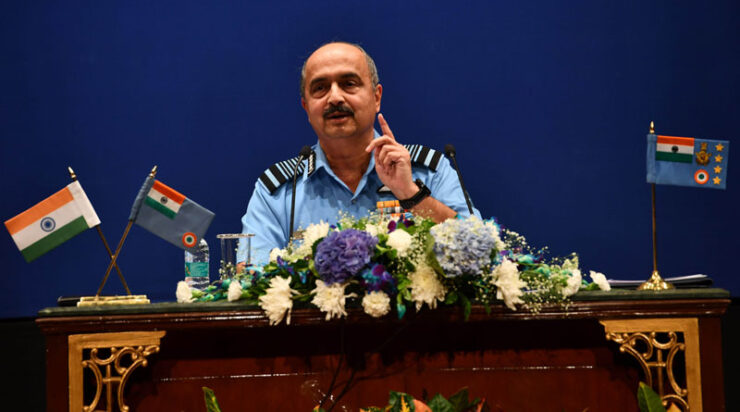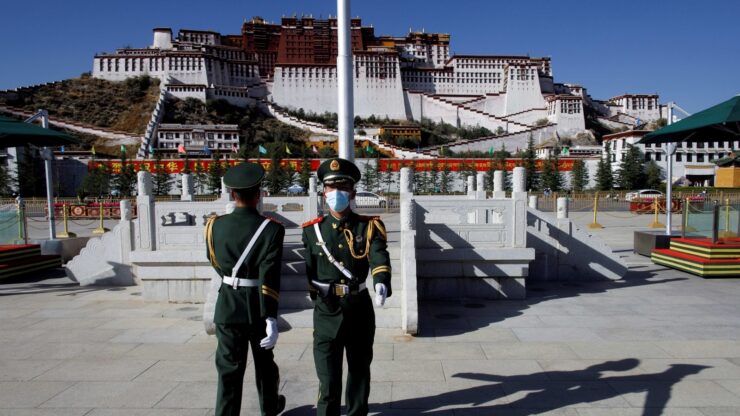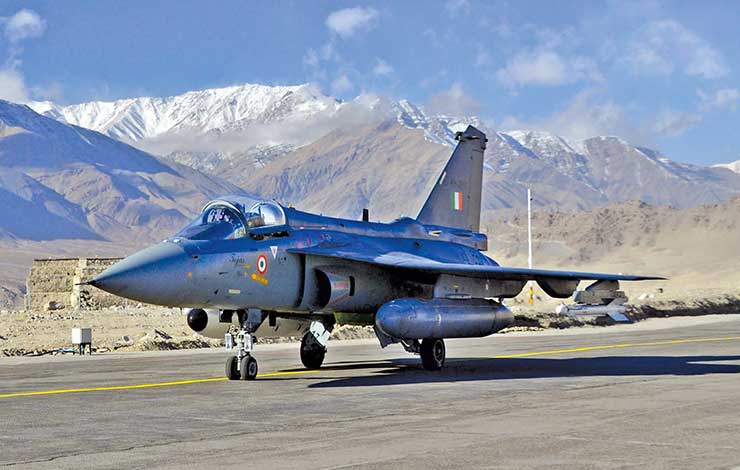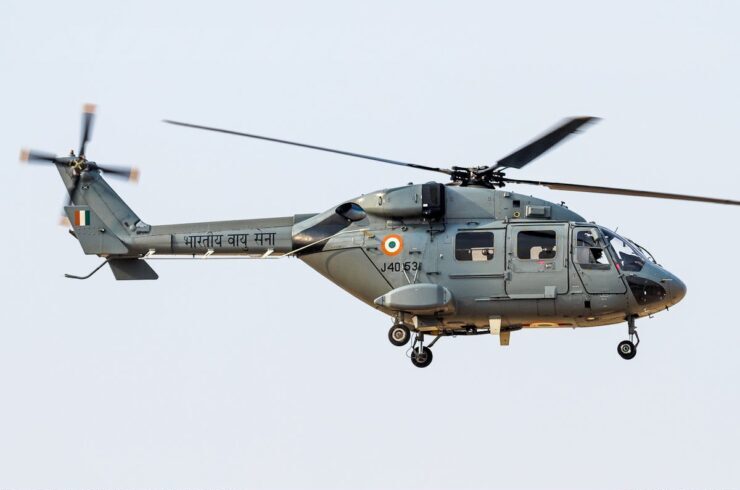
Indian Air Force’s ninth decade roadmap will witness multiple challenges along with ample opportunities. With the ongoing significant modernisation and multi-dimensional capability development, its sights are set to become an all-encompassing strategic force by 2032 – its centenary year.
In a candid conversation with Ajit K. Thakur, editor – Raksha Anirveda, the Chief of Air Staff, Air Chief Marshal VR Chaudhari explains IAF’s positioning amidst the emerging two front war like situation, focus on enhancing the overall combat capabilities through indigenous efforts, retaining the edge over adversaries and be future ready. Edited excerpts:
RA: Is there complete agreement in the Indian defence establishment on whether the Air Force is a supporting force or more? Can lack of consensus on this stall the military theaterisation effort? In this backdrop do you think the creation of Integrated Theatre Commands is a decision taken in haste, without due diligence?
ACM VRC: Success in conflicts will depend on how well the three services are integrated. Joint Planning and execution is the cornerstone of integrated war fighting. The three services have demonstrated this in the recent Eastern Ladakh impasse. Synergistic application of military power is necessary irrespective of the military structure that a nation adopts. Thus, the question of lack of consensus in such a reform does not exist and we look forward to evolve a future ready and capable system.
RA: Ramp up of infrastructure is a key irritant in Indo-China ties. With China building infra in Tibet and Xinziang, and India following suit with roads coming up and about 36 IAF installations being planned near the LAC, do you think India and China are headed for a confrontation? Do you think IAF still enjoys superiority over PLAAF in the Karakorum and the Himalayas?

ACM VRC: Infrastructure development by China along the LAC is being monitored closely. Infrastructure is being developed on our side for the defence and maintenance of our borders and is by no means an indication of any offensive intent. Talks for de-escalation and disengagement continue in the meanwhile. Yes, without doubt IAF enjoys operational advantage in these areas. We have demonstrated our capabilities during the recent impasse and the results are for all to see.
RA: Besides the desperate need for more fighter squadrons, what are the other short-term, medium term and long-term requirements of the IAF in terms of platforms and infrastructure? How does IAF see itself at a time when military space and strategic verticals are gaining significance and importance particularly i n the backdrop of budgetary constraints?
ACM VRC: The focus has been integration of new generation weapon offering high precision and enhanced range for IAF’s frontline aircraft. Digitalization and networking of all weapon systems has made IAF fully network centric in conduct of operations. Cyberspace is set to emerge as the next sub-conventional domain and there is a need to have strong capabilities to track and trace any possible attacks on the IAF’s Critical Information Infrastructure. We are moving towards AFNET 2.0 which is a software defined networking realm that shall form the backbone of all NCW operations in the IAF.

Despite the effect of the pandemic on the economy, IAF has sufficient allocation under the capital head. Our capital budget has been enhanced over last year, which has helped us to continue with our modernization and also build important combat capability.
RA: Despite our best indigenization efforts, we have not been able to produce high-tech products like aero-engines or top-notch state-of-the-art fighters for example. The other services too have suffered similarly. This has resulted in a failure to erect a vibrant defence-industrial complex. To what would you primarily attribute the failure? Also will the indigenization effort lead to compromises on quality as we have nothing much to show for?
ACM VRC: Defence PSUs are the main stay for sustenance and operation of equipment. Successful induction of LCA and ALH and many new types of radars, sensors and weapons are testimony to this. IAF has initiated numerous indigenisation programmes through HAL thereby energizing the Indian ecosystem. We have been constantly tapping the strengths of various R&D Centres for upgradation, life extension, modifications and certain specific studies. From our experience, the scope to cooperate with the private sector is immense which includes the opportunity for partial basking to industry partners. The indigenization effort is certified for airworthiness through rigorous testing in all stages. Quality assurance remains paramount in aviation to ensure operational efficiency and safety by all stakeholders.


RA: How do you perceive the current and future capabilities of IAF amid the changes happening in modern warfare as well as in Indian defence modernization landscape? When will we get our own fifth generation stealth fighter? As a corollary do we have protection against the PLAAF stealth fighters like J-20 that are being mass produced now?
ACM VRC: IAF plans to employ a mix of indigenous and foreign platforms. In the future, with indigenous development of advanced LCA Mk 1A, AMCA and MRFA (under Make in India), our dependence on imports will certainly be reduced. Development of an Indian made fifth generation combat jet will also be a step toward self-reliance and in line with the country’s ‘Make in India’ initiative.
On the matter of stealth, we are closely watching the performance of the J-20 vis-a-vis the claims in this regard. The design and development for India’s fifth generation combat aircraft is likely to incorporate 6th generation technologies that enable us to close the gap in this aspect. Our force planning and build up caters for countering current and assured threats from adversaries.









